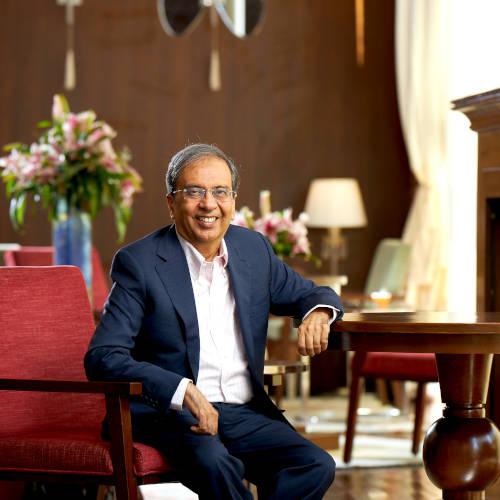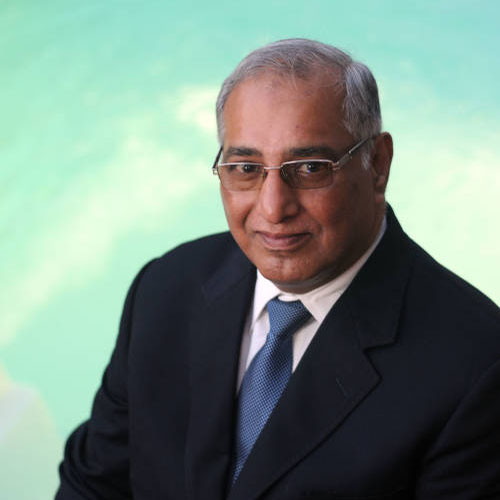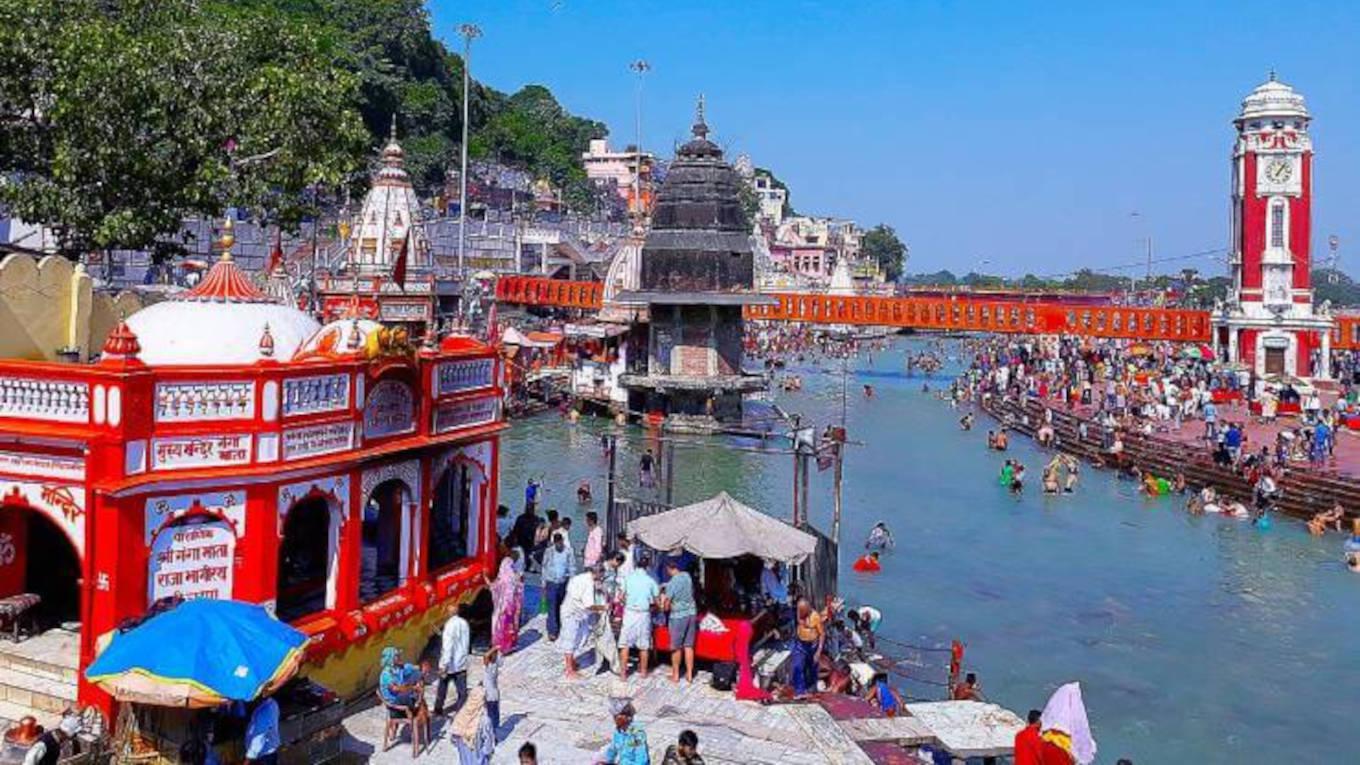-

Keswani: the aspirational class will fuel the growth
Ayodhya is already witnessing a significant increase in pilgrim visits, with estimates suggesting a potential 100-fold rise in the coming years. Leading hotel chains and budget players are vying for a piece of the pie, with investments exceeding Rs85,000 crore planned for building new hotels and enhancing existing infrastructure.
While luxury hotels cater to a specific segment, the focus is also on developing mid-range and budget stays to accommodate the diverse needs of pilgrims and spiritual tourists. While Ayodhya is a prime example, the trend extends to other spiritual destinations like Varanasi, Mathura, Puri and Pushkar. These locations are experiencing similar growth patterns with hospitality playing a crucial role in catering to the influx of visitors.
Spiritual Tourism is the largest contributor to travel across India with such landmark destinations as Jammu Tawi for Vaishno Devi, Tirupati and Sabarimala in the South, Haridwar and Rishikesh in North India, the Buddhist Circuit in east India and now Varanasi, Prayagraj and Ayodhya, along the Ganga.
“Overall, the growth of spiritual and religious tourism presents a significant opportunity for the Indian hospitality sector at present,” observes Abinash Manghani, chief executive officer, WelcomHeritage Hotels. “By understanding the specific needs of this promising segment and investing in targeted infrastructure and experiences, hotels can tap into this booming market and contribute to the overall growth of the industry.”
Manghani is sure that hospitality companies will invest significantly in spiritual and religious destinations of India as there is year round travel to these cities. “Government initiatives like the Pilgrimage Rejuvenation and Spiritual Augmentation Drive (PRASAD) scheme and improved connectivity are enhancing accessibility and amenities near these destinations, further fuelling hospitality growth,” he emphasises.
Destination wedding rings a bell
While, the burgeoning trend of destination weddings is ringing wedding bells not just for couples, but for mid-segment and upper mid-segment hotels across India. As couples seek unique and personalised celebrations, they're moving beyond traditional wedding venues, creating a demand for hotels that can offer stunning backdrops, diverse themes, and memorable experiences. While luxury hotels remain a player, their exclusivity leaves ample room for the sweet spot of mid-segment and upper mid-segment hospitality.
These hotels cater to cost-conscious couples who still desire high-quality amenities and services at attainable prices. They offer diverse options, from boutique hotels in quaint towns to modern resorts, making them adaptable to various preferences and budgets. Plus, their flexibility allows them to host intimate gatherings or grand celebrations, accommodating diverse guest lists.
“While luxury hotels hold their charm, several factors are propelling the mid-segment and upper mid-segment rise,” Manghani informs. “Many stunning destinations in India lack sufficient luxury infrastructure, presenting opportunities for well-positioned mid-segment players. Additionally, couples are prioritising unique experiences, and these hotels can excel by incorporating local cultural elements, themed weddings, and personalised touches. Our Prime Minister’s focus on domestic tourism and events further fuels this trend, attracting more destination weddings within India and benefiting hotels across categories.”
-

Manghani: Our greatest asset lies in our human capital
“However, challenges remain. Increased competition necessitates strong marketing and unique offerings. Supporting infrastructure development in emerging destinations is crucial to accommodate the growing demand. Finally, partnering with local communities and businesses enriches guest experiences and fosters sustainable tourism. In conclusion, destination weddings present a golden opportunity for mid-segment and upper mid-segment hotels in India,” he adds.
Although the Indian hospitality sector holds immense potential, navigating the current landscape poses distinct challenges too. Apart from cost of capital, which is high, the Indian hospitality sector is beset with long-term low returns on Capital. However, this sector is of late attracting long term institutional funds.
“Our greatest asset lies in our human capital which needs to be developed further if India must develop into a tourism economy,” stresses Manghani. “Bridging the skill gap through comprehensive training programs is paramount, ensuring a skilled and motivated workforce equipped to fulfil evolving guest expectations”.
In the Indian hospitality sector, optimising business operations for success also demands embracing technology in a big way. Automation, data analytics, and AI hold the key to streamlining processes, enhancing efficiency, and personalising guest experiences. Furthermore, integrating sustainability as a core value isn't simply an ethical choice but a driver of long-term profitability.
Manghani feels that the power of digitalisation cannot be overstated. Investing in a robust online presence, targeted campaigns, and leveraging digital platforms will reach global audiences. Data-driven decisions, based on guest insights will allow tailoring offerings, personalising experiences, and optimising marketing strategies for maximum impact. Prioritising safety and security through robust protocols, promoting responsible tourism practices, and collaborating with authorities will foster a safe and secure environment for all.
The Indian hospitality sector thrives on resilience and innovation. By tackling these challenges head-on, the sector can create a future where all stakeholders of the industry flourish and contribute significantly to India's economic and social progress.
According to Chander Baljee, chairman and managing director, Royal Orchid Hotels, “Spiritual and religious tourism is a powerful catalyst for the Indian hospitality sector. Last year, this segment reported a remarkable surge in both domestic and foreign tourists visiting pilgrimage sites in India. The burgeoning spiritual tourism landscape is fostering an increased demand for hospitality services such as accommodations, food and beverage, and travel services, with 70 per cent of Indian travellers expected to seek spiritual retreats like meditation and mindfulness. Government initiatives, including PRASAD, further amplify this growth by boosting the number of tourists. The economic impact is noteworthy, as the Indian religious and spiritual market size reached about $58.56 billion in 2023 and is projected to grow at a CAGR of 10 per cent during 2024-32.”
In essence, the surge in spiritual and religious tourism is propelling the Indian hospitality sector, marked by an influx of tourists, substantial revenue generation, and heightened demand for services, government support, and a significant economic footprint.
Tiers II and III cities of India are indeed set for significant growth in the hospitality sector, Baljee adds. With rising incomes, changing lifestyles, and government infrastructure development, there is a growing demand for quality hospitality services in these cities. And, the cultural richness also makes them attractive tourist destinations.
Also, the rising trend of destination weddings is set to significantly boost mid-segment and upper mid-segment category hotels across India.
-

Baljee: demanding infrastructure status for hospitality sector
“Traditionally associated with luxury venues, there is a notable shift in preferences as couples increasingly seek unique and personalized experiences. Mid-segment and upper mid-segment hotels are adapting to offer tailored services, providing an attractive blend of affordability and quality. The appeal of destination weddings is expanding beyond luxury hotels, acknowledging the allure of picturesque locations for intimate celebrations. Mid-segment and upper mid-segment hotels are well-positioned to meet this demand with scenic venues, personalised services, and reasonable pricing. Our strategies are aligned to capitalise on this trend, confident that it will significantly contribute to our business and the broader hospitality industry’s growth,” explains Baljee.
Time to give its due
Baljee has been seeking infrastructure status for the Indian hospitality sector from the Indian government, aligning it with the commercial and industrial sectors. This recognition is essential to enhance the sector’s credibility and foster sustainable development. “In terms of financial aid, I propose a 5 per cent GST on banquets, irrespective of room tariff, to promote event hosting. Simultaneously, I recommend a 5 per cent GST applicable to room charges below Rs7,500, making our services more accessible to a broader audience,” he added.
Also, Baljee advocates for accessible loans with long-term durations of up to 25 years, providing the necessary financial stability for growth and development of the Indian hospitality sector. He said, “Furthermore, I emphasise the importance of infrastructure development, particularly in tourist places. I urge the government to establish world-class toilet facilities, enhancing the overall experience for visitors and contributing to the growth of tourism and tourist opinion on New Bharat”.
“Indian hospitality sector contributes a sizable percentage of the country's GDP and employment,” informs Param Kannampilly, executive chairman, Concept Hospitality. “The government of India needs to recognise this and consider the hospitality sector as a partner to India’s growth story and not just a cash-cow for tax generation. Also, our sector should be considered an industry partner, not a conspicuous-consumption luxury sector to only be taxed and penalised. Once we are looked at as an Industry, and start getting the benefits of that, the sector will grow exponentially and fuel India’s economy and growth.”
Kannampilly contends that, as more and more domestic tourists and many NRIs also are now converging on religious sites and temple towns in increasing numbers, spiritual and religious tourism is a growing market segment which earlier did not have quality hotel accommodations in India. Many branded hotels are now opening up in these cities, fuelling the growth of the sector. “The Fern Hotels & Resorts have been market leaders in these locations, with nine hotels operational in eight of the major temple towns in India,” adds Kannampilly.
With the Indian economy growing at a furious pace, smaller Tiers II and III cities are expanding their footprint at a faster pace. Many of these cities now boast of branded hotels, and demand for hotel rooms and banqueting spaces are also growing exponentially. These smaller cities will be the engines of growth for the sector in coming years, according to Kannampilly.
-

Kannampilly: smaller cities will be the engines of growth
“India has always been the land of spirituality,” remarks Vikram Kamat, founder, VITS Hotels & Resorts, commenting on the anticipated spurt in the growth of religious tourism in India. “The hospitality sector in the religious circuits of India is getting organized gradually. The renewed focus of the government on improvement of road & rail connectivity, uninterrupted power supply and availability of high-speed internet across the country have invariably resulted in the spurt in growth of the hospitality industry in smaller cities of India.
Kamat feels that, going forward, ‘destination wedding’ business will not be confined merely to the luxury hotels of India. “The trend reveals that even Three- or Four-Star hotels located in small cities too are considered as ideal venues for the aspiring youth population of India to organise marriage functions and social events,” he forecasts.
Incidentally, Finance Minister Nirmala Sitharaman acknowledged the promising future of the tourism sector in her interim Budget speech in Lok Sabha recently. “Tourism, including spiritual tourism, has tremendous opportunities for local entrepreneurships. States will be encouraged to develop iconic tourism centres. To address the emerging fervour for domestic tourism, projects for port connectivity, tourism infrastructure and amenities will be taken up on islands, including Lakshadweep. This will help in generating employment and promoting investments. To encourage sustained foreign investments, we are negotiating bilateral investment treaties with our foreign partners in the spirit of FDI (First Develop India),” she said.
The World Travel and Tourism Council estimates that the contribution of travel and tourism to India’s GDP is expected to be 6.7 per cent per year between 2019 and 2029. The feeder regions of the country and religious destinations of India are likely to contribute a lot to the anticipated buoyancy in the Indian hospitality sector as spiritual tourism is perceived to be gaining immense interest across segments of families, couples and millennials, in addition to the senior citizen population of India.






































